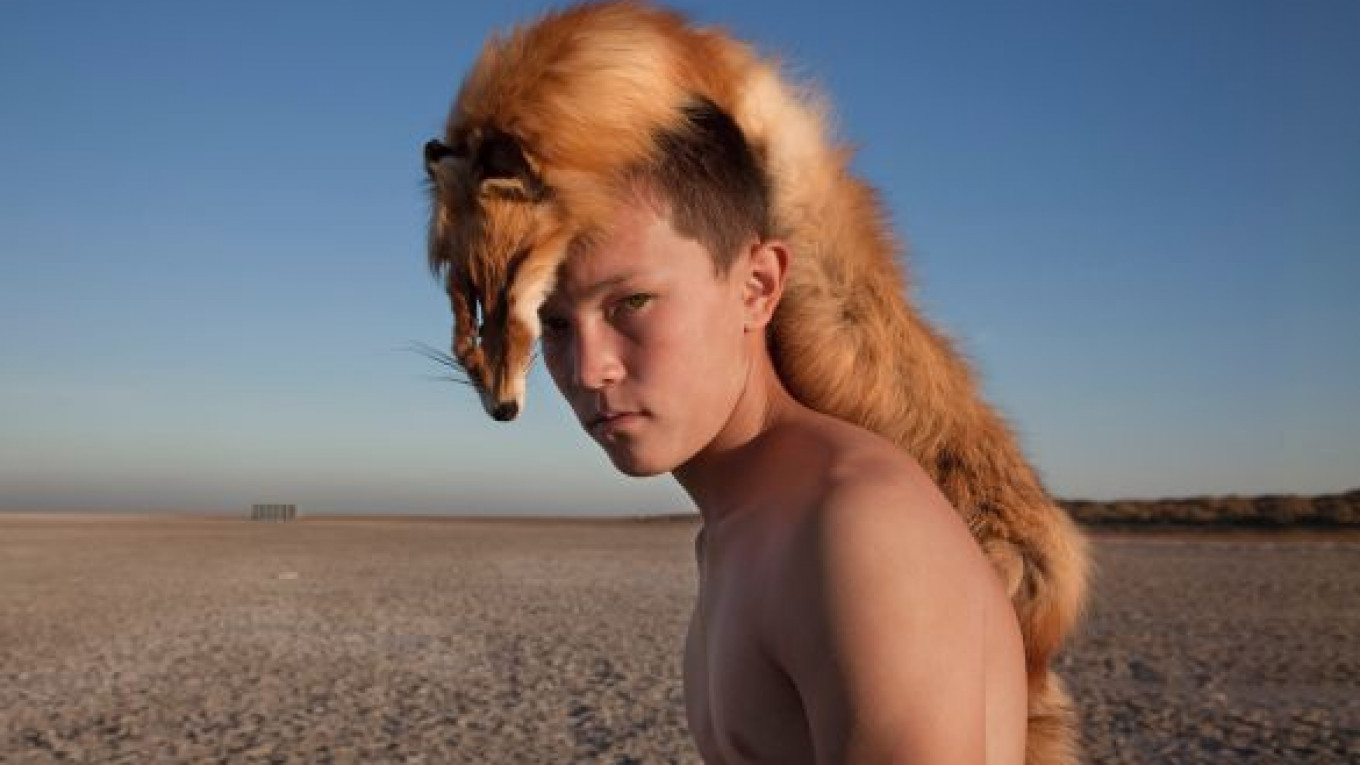LONDON — Remarkably, in an age of global communications, there are large parts of the world that remain shrouded in myth and cliche. Despite a cultural history spanning thousands of years, Central Asia is one such unfortunate case. At best, it conjures up images of shepherds, camels and strange customs parodied by the fictional character Borat. Yet for most outsiders, it’s simply a black hole on the world map, occasionally acknowledged by the foreign press when it comes to Western strategic interests.
With a vibrant selection of recent art, a new London exhibit redresses these simplistic perceptions and unveils the complex nature of Central Asian culture and identity. Aptly titled “Between Heaven and Earth,” the show evokes a multifaceted realm of mountains and steppe, faith and secularism, tradition and modernity.
According to curator David Elliott, the idea of heaven and earth is “a metaphor for life itself, a path that we all tread.” But the analogy is starkest in the center of Asia, where shaman meets communist and past meets a constantly updated present.
The artists on show are mainly from ex-Soviet republics (better known as the “Stans”) but also from Afghanistan and Mongolia. Working with a variety of media, they embark on inventive juxtapositions of style and subject matter to create thought-provoking and often humorous pieces. Frequently engaging with the past, they also invoke new dilemmas posed by globalization and development.
Said Atabekov, a founding member of the Kazakh avant-garde, starkly captures the clash between the old and the new in his traditional silk and cotton kaftans, lined with the camouflage uniforms of U.S. marines. Similarly, his compatriot Erbossyn Meldibekov ironically reflects on the presence of foreign military bases in the region by arming camels with missiles and painting them onto ceramic plates.
For her part, Almagul Menlibayeva uses the mythical world to ponder a very real concern, that of the shrinking Aral Sea. In a stunning video starring centaur-like fox spirits, the artist ponders the relationship between rapid industrialization and environmental decay.
While many of the works address national stereotypes, political legacies and power shifts, one artist looks toward science for inspiration. Blending together conceptual architecture, philosophy and math, Saken Narynov cites Stephen Hawking among his influences. While grateful for his Soviet education, he says independence has finally allowed local artists to “open up and show who they really are.”
Surprisingly, even after the fall of the Iron Curtain, there have been few attempts to contextualize and show art from the region. David Elliott says this has added to “a reductive colonialist view” and misunderstanding.
With this in mind, “Between Heaven and Earth” is a project that strives to promote cultural understanding of Central Asia in the West. Stepping away from stereotypes, it situates present-day artistic practice in a dynamic framework that it rightly deserves. Some would argue that “Central Asia” is itself a hackneyed phrase that simplifies and reduces. But while the exhibition tackles themes of shared history and culture, it also keeps in mind the individual voices in each location. Popular myths are not easily erased, but this is certainly a good start.
“Between Heaven and Earth” runs through Nov. 13 at Calvert 22 Foundation, 22 Calvert Avenue, London. Old Street or Liverpool Street tube stations. Tel. +44 (020) 7613-2141,
A Message from The Moscow Times:
Dear readers,
We are facing unprecedented challenges. Russia's Prosecutor General's Office has designated The Moscow Times as an "undesirable" organization, criminalizing our work and putting our staff at risk of prosecution. This follows our earlier unjust labeling as a "foreign agent."
These actions are direct attempts to silence independent journalism in Russia. The authorities claim our work "discredits the decisions of the Russian leadership." We see things differently: we strive to provide accurate, unbiased reporting on Russia.
We, the journalists of The Moscow Times, refuse to be silenced. But to continue our work, we need your help.
Your support, no matter how small, makes a world of difference. If you can, please support us monthly starting from just $2. It's quick to set up, and every contribution makes a significant impact.
By supporting The Moscow Times, you're defending open, independent journalism in the face of repression. Thank you for standing with us.
Remind me later.






